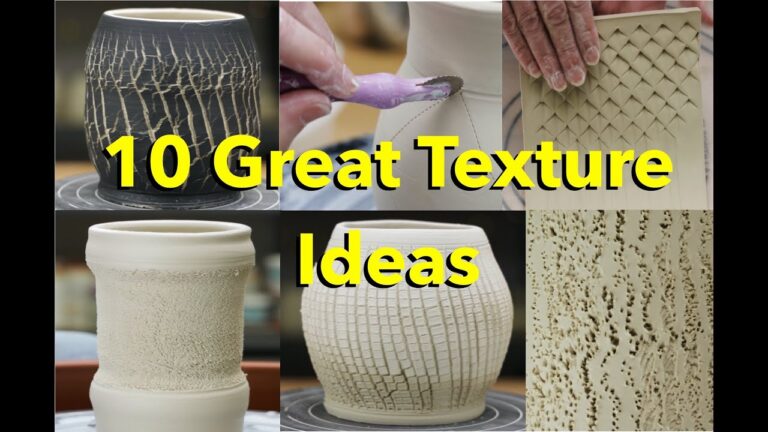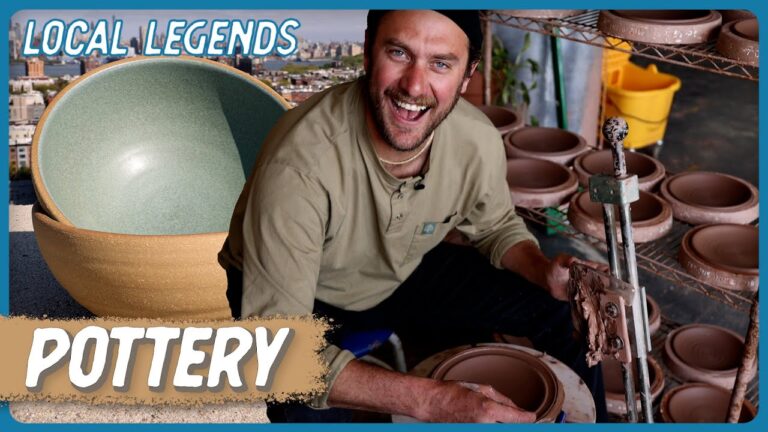Are you looking for new ways to add depth and interest to your pottery creations? Texture inspiration is key in elevating your pieces from ordinary to extraordinary. In this article, we’ll explore different techniques and sources of inspiration for incorporating texture into your pottery designs. Whether you’re a beginner or a seasoned potter, you’ll find valuable tips and ideas to take your work to the next level.
- Incorporating various textures such as smooth, rough, and carved surfaces can add visual interest to pottery pieces.
- Drawing inspiration from natural elements like tree bark, ocean waves, or sand dunes can help create unique textures in pottery.
- Experimenting with different tools and techniques, such as sgraffito, impressed designs, or slip trailing, can enhance the overall texture of pottery.
- Mixing different types of clay or adding materials like sand, grog, or fiber can create intriguing textures in pottery.
- Looking at traditional pottery techniques from different cultures around the world can provide valuable insights and inspiration for incorporating texture into pottery designs.
How can texture be created in ceramics?
To create texture in ceramics, one popular method is to impress various objects into the clay. This can range from using pre-designed rollers to pressing in gravel from the garden. The possibilities are endless when it comes to the textures that can be achieved by simply impressing different objects into a slab of clay.
Another way to add texture to ceramics is by using carving tools to etch intricate designs into the surface of the clay. This technique allows for more precise and detailed textures to be created, adding depth and visual interest to the finished piece. By carefully carving into the clay, artists can create unique patterns and motifs that enhance the overall aesthetic of the ceramic piece.
In addition to impressing objects and carving designs, artists can also experiment with various glazing techniques to create texture in ceramics. By layering different glazes, using different application methods such as dripping or splattering, or even adding materials like sand or ash to the glaze, artists can achieve a wide range of textures that add dimension and character to their ceramic creations.
Why is texture important in ceramics?
Texture in ceramics is crucial for enhancing the visual and tactile experience of the artwork. By incorporating different textures, artists are able to create unique and dynamic pieces that capture the viewer’s attention. The variations in texture add depth and dimension to the surface of the ceramics, making them more visually interesting and engaging.
Furthermore, texture plays a significant role in conveying the artist’s vision and creative expression. The tactile quality of the ceramics allows viewers to not only see the artwork but also feel and interact with it on a more intimate level. Ultimately, texture in ceramics is essential for creating art that is not only visually appealing but also emotionally stimulating and memorable.
How can texture be added to pots?
Looking to add some texture to your plain pots? Get creative with a fork, wire brush, sponge, or leaves to create unique designs that add visual interest and personality to your planters. Embrace the imperfections and have fun experimenting with different patterns and shapes using caulk to make your pots stand out. Whether it’s lines, dots, squiggles, or even a whimsical face, the possibilities are endless for adding a touch of texture to your pots.
Unleashing the Power of Texture in Pottery
Unleash the power of texture in pottery and create truly unique and captivating pieces. By incorporating various textures into your pottery, you can add depth and visual interest to your creations. Whether it’s through carving, stamping, or using different clay bodies, experimenting with texture allows you to elevate your work to new heights and truly make it stand out.
Texture can bring a whole new dimension to your pottery, creating a tactile experience for both the creator and the viewer. It adds a sense of depth and complexity, turning a simple vessel into a work of art. By embracing the power of texture, you can unlock a world of creative possibilities and take your pottery to the next level. Whether you’re a seasoned potter or just starting out, don’t be afraid to experiment with texture and see how it can transform your pieces into something truly extraordinary.
Elevate Your Pottery Designs with Texture Exploration
Are you looking to take your pottery designs to the next level? Look no further than texture exploration! By incorporating different textures into your pottery pieces, you can elevate their visual appeal and add a unique touch that sets them apart from the rest. From smooth and sleek surfaces to rough and rustic finishes, the possibilities are endless when it comes to experimenting with texture in pottery.
Texture exploration allows you to create one-of-a-kind pieces that are not only visually stunning but also tactilely engaging. Imagine running your fingers over a beautifully textured vase or bowl and feeling the intricate patterns come to life under your touch. By incorporating various textures into your pottery designs, you can create pieces that are not only visually appealing but also invite touch and interaction, making them truly stand out in any setting.
Whether you are a seasoned potter looking to add a new dimension to your designs or a beginner eager to explore the world of textures, texture exploration is the perfect way to elevate your pottery creations. So why settle for plain and ordinary when you can take your designs to new heights with the power of texture? Embrace texture exploration in your pottery journey and watch as your creations come to life in ways you never thought possible.
Incorporating various textures in pottery not only adds visual interest but also creates a tactile experience for both the maker and the viewer. By exploring different techniques and materials, artists can push the boundaries of traditional pottery and inspire new forms of creativity. The juxtaposition of rough and smooth surfaces, intricate patterns, and unexpected finishes can elevate a piece from ordinary to extraordinary. Texture in pottery serves as a source of inspiration, inviting artists to experiment, innovate, and ultimately, create unique works of art that captivate the senses.



